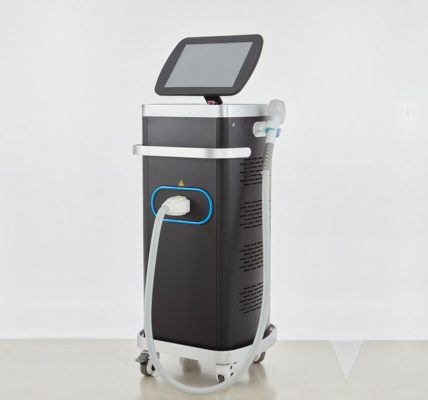Reverse Osmosis Water Treatment
Reverse Osmosis Water Treatment removes contaminants and reduces alkalinity. It also removes minerals, which is not a big deal because our bodies get the minerals we need from food.
RO systems use prefilters to remove sediment and chlorine, then force water through a semipermeable membrane to remove dissolved solids. A postfilter polishes the drinking water before it exits a dedicated faucet installed at your kitchen sink.
VOCs
VOCs are odorless, tasteless and volatile chemicals that can be found in water supplies. Like their airborne counterparts, they enter freshwater systems through careless handling and improper disposal, leaching into soils and making their way to lakes, reservoirs, rivers and aquifers that serve as sources of drinking water.
Most VOCs in the environment are a result of human activities, such as leakage and spills of household products that are not properly cleaned up or disposed of. They can also be a result of contamination from agricultural and industrial sites, such as landfills or farm fields. Common VOCs found in municipal drinking water include trihalomethanes (THMs), a disinfection byproduct that can cause colorectal cancer, perchloroethylene (PCE), also known as tetrachloroethylene, which is used for dry cleaning and in adhesives, spot removers and typewriter correction fluid, and methyl tert-butyl ether (MTBE), a gasoline additive that can contaminate groundwater through leaking underground fuel tanks.
If you are concerned about VOCs in your municipal drinking water, check your local Consumer Confidence Report from the EPA to see your municipality’s recent testing results and steps they take to control potential contaminants. If you have a private well, consider investing in a reverse osmosis Reverse Osmosis Water Treatment system that includes a carbon pre-filter and post-filter to remove VOCs from your tap water.
Chlorine
Chlorine is a chemical disinfectant added to municipal water supplies in order to kill bacteria, viruses, and other microorganisms that could cause disease or illness. While it is effective at killing harmful organisms, chlorine can also have negative effects on human health and the environment. It has been linked to cancer, asthma, heart disease, and various reproductive disorders in pregnant women.
A reverse osmosis system can remove chlorine and other contaminants from your drinking water by using the process of osmosis and diffusion. This involves separating a solution into two sides with a semipermeable membrane. When pressure is applied to the side with a high concentration of solute, the solvent molecules will move across the membrane to the freshwater side.
The pretreatment stage of a reverse osmosis system is designed to screen solid particles and prevent fouling or damage to the membrane. This typically consists of a sediment filter and a pre-carbon block, which removes anything larger than a speck of flour from the water, as well as chlorine and other chemicals. A reverse osmosis membrane then filters the water, removing minerals and a variety of other contaminants from your water supply. A post-carbon filter polishes the water and ensures it is safe to drink.
Fluoride
Fluoride is a naturally occurring element in groundwater that can be beneficial to our health when consumed in small quantities. However, too much fluoride can cause many problems. Some of the most serious issues include bone cancer, kidney disease and gastrointestinal problems.
Reverse osmosis systems filter out fluoride as well as other contaminants like arsenic and lead. To do this, the system forces water through a semi-permeable membrane. The membrane has tiny pores that allow only water molecules to pass through while preventing larger molecules of contamination from passing.
The reverse osmosis process is also used to produce ultra-pure water in the semiconductor industry and as a pretreatment for ion exchange (IX) for boiler water treatment. It is also an environmentally friendly method of desalination, producing clean drinking water from seawater and brackish water. This Filling Machine Supplier process is widely used in Perth, Australia where nearly 17 percent of the city’s drinking water comes from desalination plants.
Alkalinity
Reverse Osmosis water treatment systems remove all microbes, toxins and debris from your drinking water. While this creates high-purity water, it also lowers the pH level. This is because the process removes minerals from the water. It is recommended that you consume a well-rounded diet for vitamins and minerals to prevent vitamin and mineral deficiency.
You can use a pH test strip to find out how acidic or alkaline your water is. The strip will change color based on the concentration of your water. Water with a low pH is acidic while water with a high pH is alkaline.
You can improve the alkalinity of your RO water with an alkaline post filter. This filter adds natural calcium, magnesium, sodium, potassium ions into your drinking water. Adding these minerals back into your drinking water makes the water more balanced and increases the pH of the water to 8.5. This can help reduce the likelihood of carbonate scale on your RO membrane. This is important because it can significantly decrease the life of your RO membrane.
Minerals
Reverse osmosis takes your water down to a molecular level, removing contaminants and sediment, as well as beneficial minerals. This method of filtration uses incredible pressure to push water through a semi-permeable membrane, which means some water gets wasted in the process.
The first step of a reverse osmosis system includes a sediment filter that removes large particles like sand, dirt, and rust to prevent them from clogging subsequent filters. The pre-carbon block and reverse osmosis membrane then remove molecules that are larger than water, such as sodium, high levels of lead, dissolved minerals, and fluoride.
Reverse osmosis also eliminates beneficial minerals from drinking water, so many homeowners add mineral cartridges to their systems to remineralize their water. iSpring’s mineral cartridges, for example, help regulate the alkalinity of your water and add calcium and other essential minerals back to it. You can also use a water ionizer to add multiple types of minerals to your RO water.

